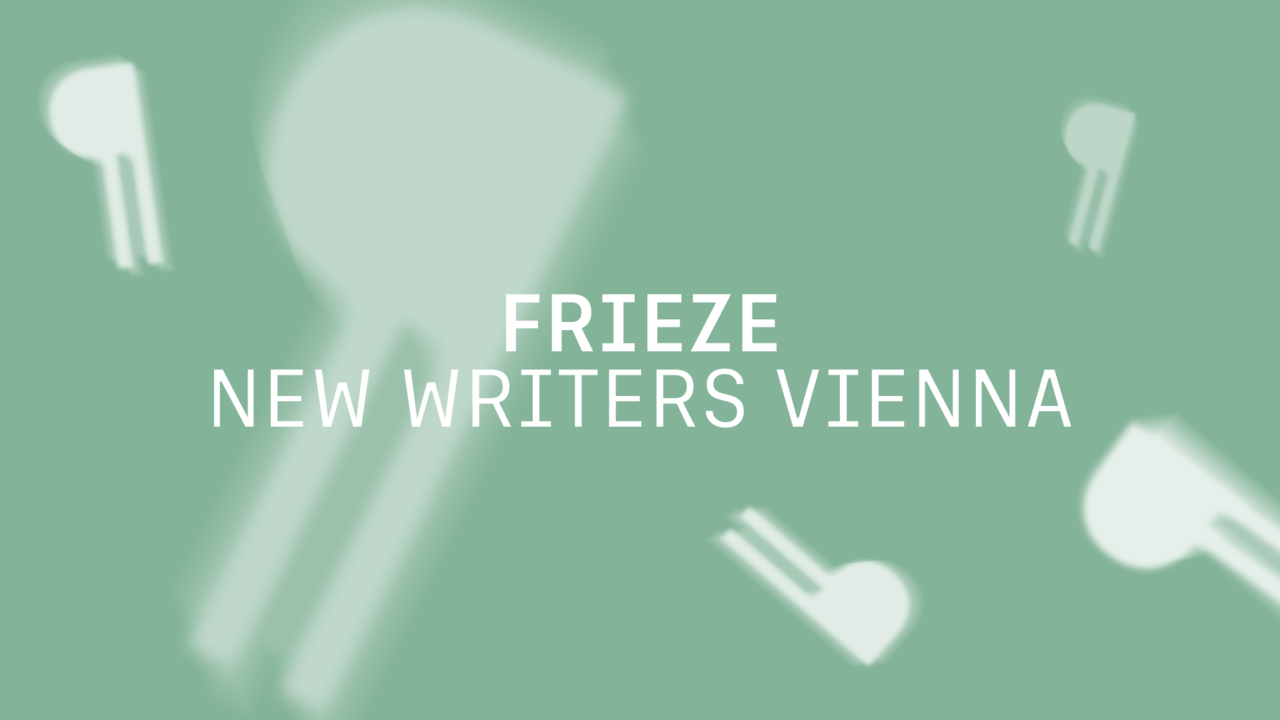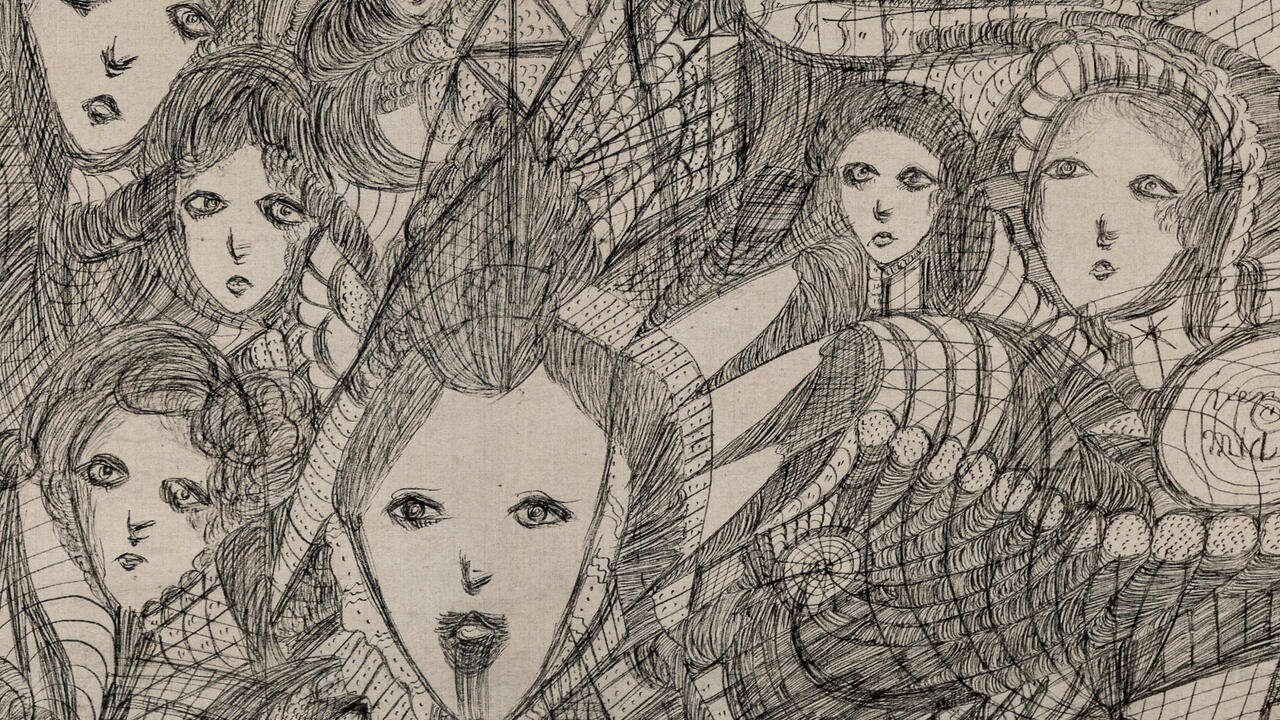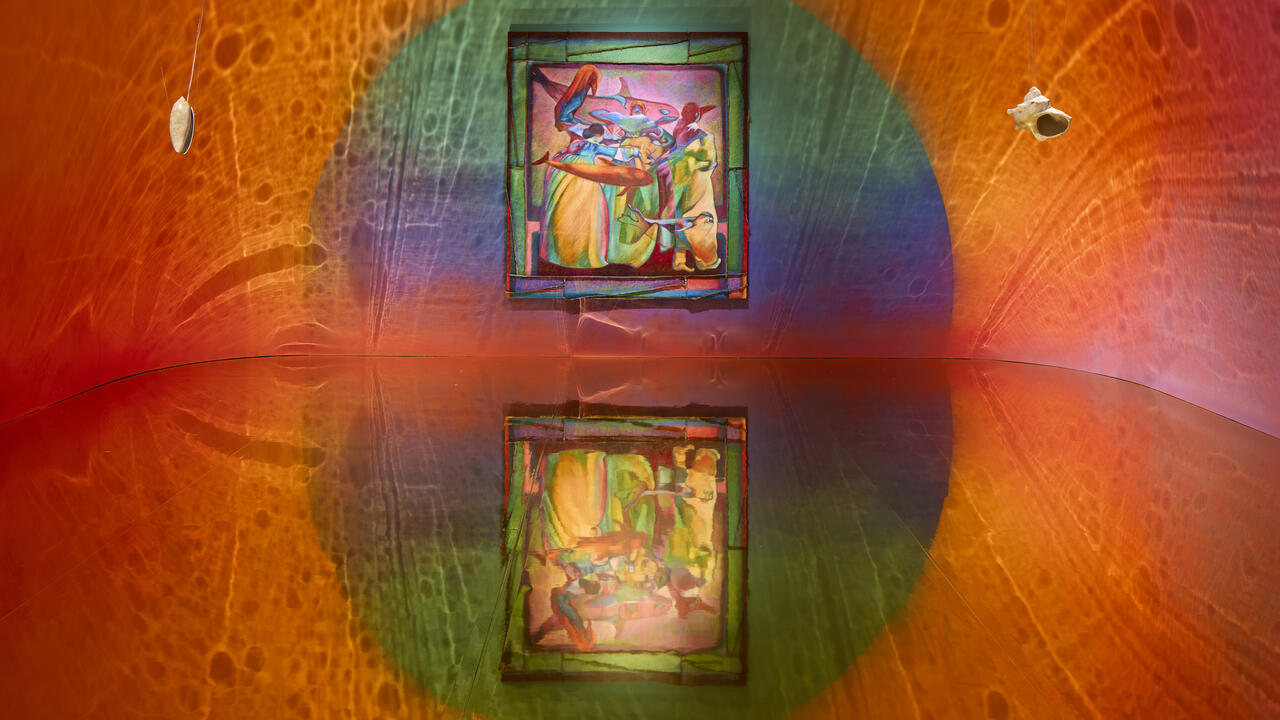The Moral Clarity of The Turner Prize 2018
Leftist histories, state violence and the cracking open of time: can a ‘mere’ competition, and publicity exercise, also speak truth to power?
Leftist histories, state violence and the cracking open of time: can a ‘mere’ competition, and publicity exercise, also speak truth to power?

The demolition raid began just before dawn. A photographer present at Umm al-Hiran in the Negev desert, southern Israel, managed to capture footage of Israeli police officers streaming into the Bedouin village – unrecognized by Israel – in the early hours of 18 January 2017. There is a confusing rush of lights in the darkness, gunshots, and then the lone blare of a car horn. It becomes apparent that a police officer and villager have died in the melee. But where should the blame lie? The state’s version of events is that the Bedouin man, Yaqub Musa Abu Al Qi’an, was shot while committing an act of terrorism by charging at police in his car, killing officer Erez Levi. Silent helicopter thermal imagery released by Israeli authorities seemed to corroborate this.
But an investigation carried out by Forensic Architecture – the Goldsmiths College-based research agency founded by Eyal Weizman, comprising architects, journalists, lawyers and scientists – refutes this narrative. In The Long Duration of a Split Second (2018), presented at Tate Britain as part of this year’s Turner Prize exhibition, through a series of films, texts and models, the collective reveals the state’s culpability. By time-stamping all available footage of the raid, taken by activists and journalists on the ground, synchronizing the sounds and heat flashes of guns being fired in the chaos, and carrying out real-life reconstructions, they put forward the case that a police officer had opened fire on Al Qi’an first, who was then left to bleed to death after losing control of his vehicle. There is a poignancy to this installation, in the line between achieving justice, and the steady documentation of state violence. Just as Forensic Architecture were shortlisted for the Turner Prize, Israel closed the case on the officers involved in the killing of Al Qi’an.

If Joan Didion writes of how time always passes, but never noticeably, then this year’s Turner Prize exhibition – which traverses ancient, biblical, world-historical states of mind – is one in which time is constantly suspended, cracked open for all to see. Forensic Architecture joins artists Charlotte Prodger, Naeem Mohaiemen and Luke Willis Thompson for the prize’s 34th edition, returning to Tate Britain this year. Consisting solely of moving image works, an airy atrium coupled with sofas and books chosen by the artists – I spy Weizman’s classic Hollow Land (2007) and Tariq Ali’s The Extreme Centre (2015) – branches off into various darkened screening rooms.
This year’s show expects, and merits, attention: viewing all its films, which veer between exhausting investigations into human rights abuses to mysterious, diaristic musings, would take the best part of four to five hours at least. It seems at once absurd that we draw grand conclusions about the state of global cultural politics from such a show, or even interpret it as a themed exhibition, rather than calling it out for what it is: a competition, and annual publicity exercise for Tate, albeit one that is also a premier institution for driving the UK’s national conversation around contemporary art. And yet Tate Britain director Alex Farquharson is not exactly wrong in claiming this year’s selection as a reflection of ‘these very political times’. Could this year’s edition of the Turner Prize conceal another mission, in pursuit of another truth?

At Tate, Forensic Architecture – nominated for their solo show at the ICA this year – are split across two rooms, focusing their installation on the Bedouin inhabitants of the Naqab/Negev region, and their struggle for land rights, which Israel refuses to recognize. Alongside their study of that fateful morning in Umm al-Hiran, the agency also presents another remarkable film, in a bid to turn the ‘forensic gaze’ of the state around. Moving from the vertical to the horizontal, Forensic Architecture maps RAF surveillance photography of the Negev desert from 1945 onto contemporary footage captured by flying cameras attached to kites, to confirm the existence of the Bedouin people’s ancestral land rights before the foundation of the state of Israel in 1947. Here, flecks and shadows in the RAF’s maps are revealed as the traces of former houses, dams, farmsteads, now steadily erased by the encroachment of Israeli settlements under the banner of ‘making the desert bloom’. It is testament to the power of imperial cartography, and the preservative qualities of the desert climate, that such delicate detail can be read from above.
Much has been made of whether Forensic Architecture see themselves as artists (the comparisons with Assemble’s controversial Turner Prize win in 2015 for their anti-gentrification housing project in Toxteth, Liverpool are inevitable), and the way their work moves between presentations of evidence in court cases to exhibitions at tony art galleries. Weizman, in an interview with frieze, appeared to suggest that such anxieties were somewhat misleading: ‘Whatever ‘art’ is, is anyways elastic,’ he told us. ‘Abandoning the term to appease our critics is giving up too much. We should rather insist, as counter-intuitive as it may seem, on the evidentiary value of art and its truth value!’

Nominated for his participation in documenta 14, Naeem Mohaiemen presents two films at the Tate. In Two Meetings and a Funeral (2017) the artist conjures up the presence of ruined utopias by tracing the history of the Non-Aligned Movement from the 1960s and ’70s, which aspired to create a counter-hegemonic bloc of countries from the Global South that could move autonomously within a world dominated by the Cold War’s superpowers. Drawing on archival footage filmed at early conferences of the Non-Aligned countries, the haunting appearance of figures such as Che Guevara and Yasser Arafat is interspersed with interviews with the historian Vijay Prashad. Two Meetings and a Funeral tells the story of a ‘third world’ attempting to rally under socialist and secular lines, the spaces within which such doomed meetings took place, and its eventual absorption by the ascent of the Organization of Islamic Co-operation.
A lone passenger, caught in a state of delirium, stalks the remnants of Athens’s Ellinikon Airport, designed by the Finnish architect Eero Saarinen in the 1960s but abandoned since 2001, in Mohaiemen’s Tripoli Cancelled (2017). Triggered by the experience of the artist’s father, who as a surgeon travelling from Bangladesh to Libya sometime in the mid-1970s, misplaced his passport en-route and became stranded at this very airport, Tripoli Cancelled follows Mohaiemen’s mysterious, and musical exile, who has apparently been trapped there for years. He roams endless corridors and lounges in a tan suit, smokes and shaves, dances to Boney M’s version of ‘Rivers of Babylon’, and reads from Richard Adams’s Watership Down (1972). Finally, seated on an escalator, he breaks into a rendition of ‘Never on Sunday’.

Charlotte Prodger, nominated for her solo show at Bergen Kunsthall, turns our attention from world-political commitments to the personal. Her film BRIDGIT (2016), shot entirely from the artist’s iPhone, navigates rural Scotland through a kind of augmented reality. Passing through shots of Ayrshire’s monolithic standing stones (the film takes its title from a Neolithic deity), the view from the back of a ferry, to domestic scenes, lounging in bed with a cat – narrated through extracts from Prodger’s diaries where she discusses coming out, and being mistaken for a man – BRIDGIT keeps the camera close to the artist’s body.
Referencing the writings of Allucquére ‘Sandy’ Rosanne Stone, Prodger sees the smartphone as prosthesis; it moves with her, following the rise and fall of her ribcage. It becomes an extension of her nervous system: sometimes she presses her fingers up against its lens, blood pulsing past. Each scene rarely lasts beyond a few minutes, pushing at the iPhone’s memory limits. BRIDGIT is a refusal to view the digital world and in-real-life as distinct, but instead looks to how they constantly bleed into each other. In a hospital ward, about to undergo surgery, Prodger tells us of an anaesthetist’s advice to think about something nice. She thinks about a field, but can never fix on the right one: ‘I never settled on one and that slideshow, searching for the right field, was the last content before nothing.’

Nominated for his solo exhibition at London’s Chisenhale Gallery, Luke Willis Thompson’s slow-burn, 35mm black-and-white filmed portraits, apply the dark magic of Warhol’s Screen Tests (1964–66) to those now caught at the threshold of racialized and police violence. In the immediate aftermath of the shooting of her partner Philando Castile at a Minnesota traffic stop in 2016, after he had confirmed to a police officer that he was legally in possession of a firearm and began to reach for his license, Diamond Reynolds’s livestream of the scene, in which she calmly narrates the situation – all while blood soaks through the shirt of her dying boyfriend, and police officer Jeronimo Yanez shouts expletives – went viral on Facebook.
In Willis Thompson’s autoportrait (2017), the artist asked Reynolds to collaborate with him on a ‘sister image’: a silvery, nocturnal counterpart to the churn of viral imagery demanded by mass media. The camera gazes up at her as she appears lost in reverie, tearful, wordlessly singing. Accompanied only by the clatter of the projector, the silence is deliberate: autoportrait was filmed before the case went to court, and Reynolds’s counsel had advised no comment. Yanez was acquitted a week before autoportrait debuted last year. Included here also is Willis Thompson’s Cemetery of Uniforms and Liveries (2016), filmed portraits of the descendants of Dorothy ‘Cherry’ Groce, shot by police in Brixton in 1985, and Joy Gardner, killed by police during a deportation raid in Crouch End in 1993. And in _Human (2018), Willis Thompson presents a close study of the marbled textures running across a miniature piece by British artist Donald Rodney, who suffered from sickle cell anaemia, and pinned together scraps of his own shed skin into a small house.
All revolutions end with some kind of reformulation of time. It was industrialization, of course, which decoupled time from nature’s own rhythms, day bleeding into night, as Jonathan Crary reminds us in his 2013 polemic 24/7: consider Joseph Wright’s 1782 painting Arkwright’s Cotton Mills By Night, in which the windows of the mill are now artificially illuminated by gas lamps, work now running through the night. There’s a similar sense throughout the works on show here of time as an inherently political project, and the possibilities that emerge when we reshape it. I suspect that Forensic Architecture, the bookies’s favourites, will scoop the GBP£25,000 prize on 4 December. But my mind’s eye keeps returning to Willis Thompson.
On the opening night of the exhibition, members of the BBZ activist group appeared wearing t-shirts reading ‘Black pain is not for profit’: a reminder that Willis Thompson – of New Zealand origin with white and Fijian ancestry – has attracted controversy and criticism from some quarters for allegedly turning Black suffering into spectacle. The issues of consent, and Reynolds’s own agency in creating autoportrait, remain curiously concealed. Is it exploitation? Probably not. Is it spectacle? Perhaps, but not in an obvious way. It is a counter-image, in which the event is slowed down to suspended time; it defamiliarizes the speed of our world, casting our gaze anew.
Main image: Luke Willis Thompson, _Human, 2018, installation view, Kunsthalle Basel, 2018. Courtesy: the artist, Hopkinson Mossman, Auckland / Wellington and Galerie Nagel Draxler, Cologne / Berlin; photograph: Philipp Hänger





















